You can’t help but be a sucker for the Pacific octopus. These boneless brainiacs are much more charismatic than you might imagine. They are also known as giant Pacific octopus, and North Pacific giant octopus. Wrap your tentacles around this one and hold on tight, these cephalopods are ready to astound you! Read on to learn about the Pacific Octopus.
Description of the Pacific Octopus
All octopuses have a rounded mantle and eight long arms. Each arm has two rows of suckers, some of which have hooks or hair-like projections to increase grip. Beneath their arms is the mouth, which has a beak and a sandpaper-like tongue called a radula.
Like its other close relatives, the octopus has pores under the skin called chromatophores. These pores have pigments inside that they can use to change the color of their skin.
Interesting Facts About the Pacific Octopus
These intelligent creatures are unbelievably intelligent, and more than capable of problem solving. Learn more about the feats and features of these cephalopods below!
- Large and in Charge – These creatures can really live up to the name “giant” Pacific octopus. The largest individuals can weigh up to 150 lbs. and measure 20 ft. across with their arms stretched. That’s one big octopus!
- Tight Spaces – Because they have no bones, these rather large octopuses can fit through amazingly small spaces. They are capable of squeezing through any space that is large enough for their beaks to fit through. The beak is the largest hard structure inside the octopus.
- Escape Artist – Of course, being able to squeeze through tiny spaces can make it difficult to keep these creatures in aquariums. These creatures have even been known to sneak out of their tanks at night and prey on neighboring aquarium animals! Of course, a daring escape to snack on some neighbors wouldn’t be complete without returning to its “home” tank so it can repeat the offense tomorrow!
- Brainpower – The ability to stage a daring escape is not the only thing these octopuses have going for them. Researchers have documented this octopus’ ability to compete puzzles, and to open objects to reach the food inside. In fact, many aquariums use this type of activity as a form of mental stimulation to keep the octopuses busy! To show their appreciation, they can recognize their caretakers and change color/texture at their approach!
Habitat of the Pacific Octopus
These octopuses live in relatively cold waters in the Pacific Ocean. They inhabit areas close to the coast, and will roam to around 330 ft. beneath the surface. These creatures live on the seafloor, and use crevices, rocky outcrops, and other structures as dens. Their dens provide them with a place to hide from predators, and the octopuses can even provide further protection by building walls and covers for their dens.
Distribution of the Pacific Octopus
As their name would suggest, this species inhabits the Pacific Ocean. It lives in coastal areas, mostly in seas that are shallower than 330 ft. deep. You can find Pacific octopus off the western coast of the United States and Canada, and up along the southern coast of Alaska. They also range across the Bearing Strait to northeast Russia, down to China and Japan.
Diet of the Pacific Octopus
This species of octopus, like all species of octopus, are particularly fond of crabs. They also commonly feed on shrimp, clams, snails, lobsters, fish, scallops, cockles, abalone, and even other octopuses. Some research also suggests that they can capture and eat small sharks. These predators use their eight arms to grab prey, and then bite it with their parrot-like beak.
Pacific Octopus and Human Interaction
While there have been virtually no attempts to determine what the breeding population of this species is, human activities definitely impact them. While fishing could potentially be reducing populations, there are much more dire threats at hand in the upcoming future.
Warming ocean temperatures cause algae and plankton to bloom, and consequently die off, in large numbers. Decomposing plankton use up the oxygen in the water, causing large areas called “dead zones” lacking any animals whatsoever. This also occurs in areas with extensive pollution and fertilizer runoff.
Domestication
Humans have not domesticated giant Pacific octopuses in any way.
Does the Pacific Octopus Make a Good Pet
While some people keep this species as pets, it is generally a poor idea. They can grow incredibly large, and are more than capable of escaping from their enclosures. Even the smallest space can result in an escape, and potentially cause the death of your octopus. It is also worth noting that they will eat any other fish you keep in your aquarium.
Pacific Octopus Care
In aquariums, these octopuses need relatively large tanks depending on the individual’s size. It is important that they have plenty of hiding places and a secure den to retreat to when they feel threatened.
The production of ink in a small space can be detrimental to the water quality, and potentially kill the octopus, so stressful stimuli should be eliminated. A diet of fish and crustaceans serves these creatures well, and you can even give them puzzles with food inside to keep them mentally stimulated.
Behavior of the Pacific Octopus
This species, like many other octopus species, is solitary. They live alone, and remain within their dens when they are not hunting. Scientists generally consider these creatures to be the most intelligent invertebrates on the planet. In the wild, this can manifest as tool use, sometimes even for the purpose of camouflaging themselves from predators.
Reproduction of the Pacific Octopus
Like all other octopus species, the Pacific octopus is semelparous, which means that it only breeds once before it dies. This species lives longer than most, between 3 and 5 years, compared to a single year in most other octopus species.
Female octopus can store the sperm acquired from mating for a number of months before she decides to fertilize her eggs. Once fertilized, she will lay anywhere from 120,000 to 400,000 eggs in her den. They hang from the top of the den, and she gently cleans them and jets water over them to ensure they get enough oxygen. It takes around 6 months for the eggs to hatch, and the female dies soon after.

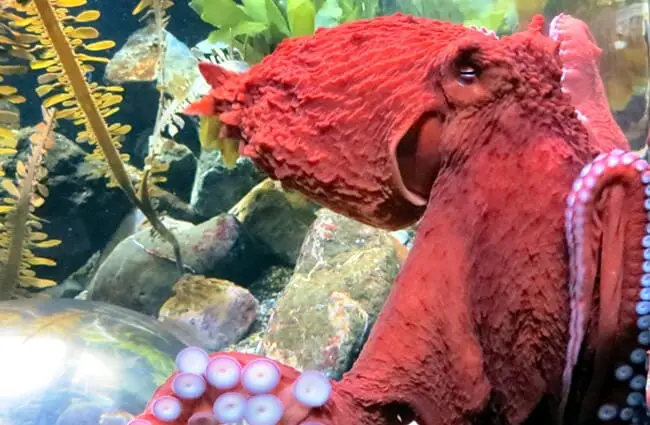




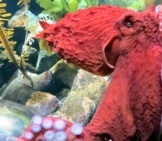

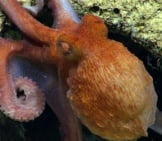
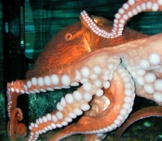


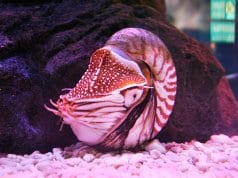
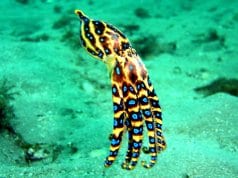










![Red Angus Closeup of a beautiful Red Angus cowPhoto by: U.S. Department of Agriculture [pubic domain]https://creativecommons.org/licenses/by/2.0/](https://animals.net/wp-content/uploads/2020/03/Red-Angus-4-100x75.jpg)

